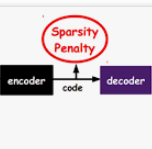项目名称: 低复杂度FIR滤波器设计理论与方法研究
项目编号: No.61471157
项目类型: 面上项目
立项/批准年度: 2015
项目学科: 无线电电子学、电信技术
项目作者: 蒋爱民
作者单位: 河海大学
项目金额: 83万元
中文摘要: 传统的FIR滤波器设计往往只注重滤波器的滤波性能,而很少考虑实际中软、硬件实现时的各类开销(如所需加法器和乘法器个数)。针对这一问题,本项目将重点考虑两类具有较低复杂度的FIR滤波器:稀疏与离散系数滤波器。稀疏滤波器设计的难点在于目标函数中0范数的非连续性,而离散系数滤波器设计的主要障碍在于优化变量值域的离散性。为了解决设计难题,本项目拟借鉴稀疏编码算法思想将这两类设计问题分解为一系列子问题,然后通过求解每个子问题的对偶问题,获得最终设计。这一研究思路的优势在于:1.对偶问题一定可以表示为凸优化问题,从而避免了由于目标函数或优化变量离散化所导致的计算困难;2.利用对偶模型可以分析所得结果是否为最佳设计;3.所构建的稀疏与离散系数FIR滤波器设计算法具有相似的结构,这为二者的结合提供了便利,从而可以进一步提高所设计滤波器的实现效率,以满足高集成度、低功耗的需求。
中文关键词: FIR滤波器;稀疏表示;对偶分析;凸优化
英文摘要: Traditional FIR filter designs mainly focus on filtering performance, but seldom take into account various costs of software or hardware implementation in practice, such as the numbers of adders and multipliers required. In this project, we shall consider efficient designs of two classes of FIR filters with low implementation complexity: sparse FIR filters and FIR filters with discrete coefficients. The difficulty of sparse filter designs is the discontinuity of the 0-norm in objective functions, while the principle obstacle of designing FIR filters with discrete coefficients is the discretization of filter coefficients. As an attempt to tackle these issues, we shall factorize original design problems using some strategy of sparse coding and then solve factorized subproblems to achieve final solutions. The major advantages of this design approach adopted in our research proposal are given below. 1. Dual problems can be expressed as convex optimization problems. Hence, the computational difficulty incurred by the discretization of objective functions or optimization variables can be avoided. 2. Using dual models, we can analyze the optimality of design results. 3. Design algorithms of both classes of FIR filters have similar structure, which facilitates their combination to further improve the implementation efficiency of FIR filters designed, so that the requirement of high integration and low power consumption could be greatly satisfied.
英文关键词: FIR Filters;Sparse Representation;Duality Analysis;Convex Optimization
